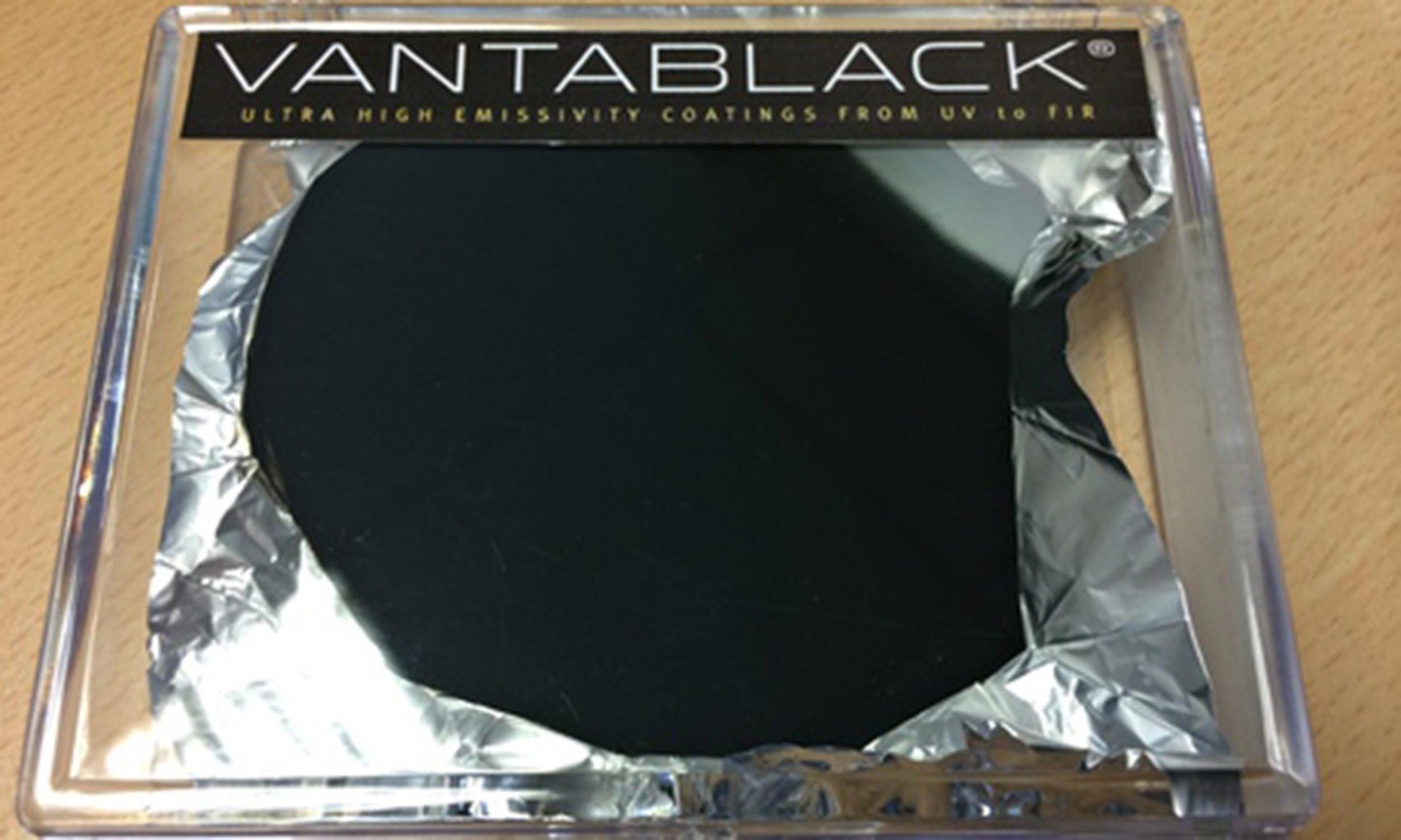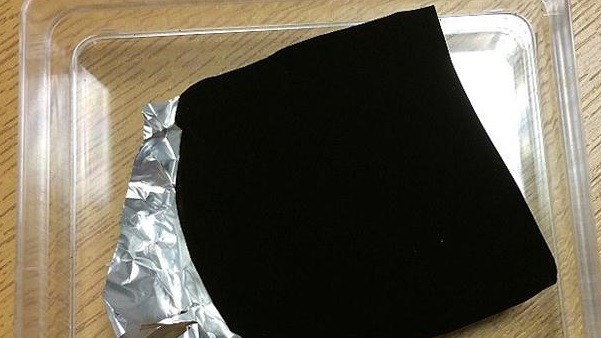
“That,” he said, “that… is really bad for the eyes.”
It was a ship of classic, simple design, like a flattened salmon, twenty yards long, very clean, very sleek. There was just one remarkable thing about it.
“It's so… black!” said Ford Prefect. “You can hardly make out its shape… light just seems to fall into it!”
The blackness of it was so extreme that it was almost impossible to tell how close you were standing to it.
“Your eyes just slide off it…” said Ford in wonder.” —Douglas Adams, Restaurant at the End of the Universe (sequel to Hitchhiker’s Guide to the Galaxy)
In yet another example of science fiction predicting the future, British company Surrey NanoSystems has recently developed Vantablack, a product that could make Douglas Adams’ fictional spaceship a reality.
Vantablack is a material that absorbs 99.96% of light. It is created by growing ‘vertically aligned carbon nanotube arrays’ (which is what the ‘Vanta’ part of its name stands for) on foil. When this foil is crumpled, the unique quality of the material becomes apparent, as the wrinkles are visible in the foil not covered in Vantablack, but the not in the crumpled Vantablack itself. The company’s CTO, Ben Jensen, described this phenomenon, “You expect to see the hills and all you can see … it’s like black, like a hole, like there’s nothing there. It just looks so strange.”

Given that it was recently unveiled at the Fanborough International Airshow, and that Surrey NanoSystems is not allowed to talk about potential military uses of the product, it seems highly likely that military stealth operations will soon be much stealthier. Vantablack would certainly be effective at helping to hide military vehicles and aircraft at night.
Not only useful for the military, the company says that it “withstands launch shock, staging and long-term vibration, and is suitable for coating internal components, such as apertures, baffles, cold shields and Micro Electro Mechanical Systems (MEMS) –type optical sensors.” It could also be used to improve sensitive telescopes, as its low reflectiveness would enhance the telescope’s ability to see far away stars.
Due to its high cost of production, unfortunately, it is unlikely that Vantablack will be made into clothing, or even ninja-style uniforms for soldiers anytime soon. If it were to be worn, however, the effect would be pretty strange to look at. The viewer wouldn’t be able to make out any details in the clothing and would see the wearer’s exposed head and limbs sort of floating above a clothing-shaped black hole, as you can see in this highly artistic rendering of a woman wearing a dress made of Vantablack against a gray background.

While Vantablack’s high fashion potential may remain unexplored, its other uses will probably be put into play soon. Surrey NanoSystems has already delivered the first orders and Jensen says that they are currently increasing production in order to “meet the requirements of [their] first customers in the defence and space sector.”
By MaryElizabeth Koepele
Story via surreynanosystems.com
Advertisement
Learn more about Electronic Products Magazine





